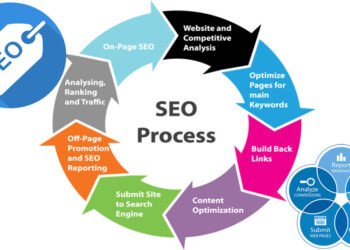Ranking your content at the top of the search engine results pages is no simple accomplishment. It requires creativity and a good amount of strategy. Entertaining and informative written content is only one piece of the puzzle. To reach position one, content must meet the criteria that both search engines and audiences value. This is where a comprehensive content scoring procedure, led by competitive content analysis, is vital for your SEO machine.
So, what is content scoring? Let’s take a look at the recipe now.
Content Scoring and Why It Matters
Before we discuss how to score our content, let’s briefly cover the basics of why SEOs score their content.
Content scoring measures your content against the factors search engines use to rank pages. While algorithms are secret, experts have identified key elements for rankings, including keyword relevance, user engagement, backlinks, and overall site performance. Scoring your content on these elements helps predict its performance and find areas for improvement.
In competitive markets, small ranking differences often mean big traffic gains. Content scoring ensures your content is competitively optimized. Achieving high-ranking content isn’t just luck. It results from a thorough process considering every factor, from strategic keyword placement to technical SEO.
The Competitive Content Analysis
Below is a list of steps to follow to score your content. But before you begin scoring, review how you’ll benchmark your analysis. One of the first steps is assessing content from your competitors.
Competitive content analysis involves studying competitors’ content to create something more valuable and relevant. It means identifying content gaps in your content and that of your competitors. Then use that information to deliver solutions and answers to your audience better than any other brand in your vertical.
Competitive content analysis is the secret sauce behind many high-performing websites. If competing articles don’t address a specific topic or contain outdated information, fill those gaps with fresh, authoritative information. Instead of rehashing what others have said, concentrate on infusing your content with as much uniqueness as possible. Search engines and users value distinct perspectives not found elsewhere. In other words, let your brand’s competencies shine through your content in a way your competitors can’t easily mimic.
How To Score Content, Step-By-Step
There are many moving parts when it comes to digital content. You owe it to yourself to itemize every factor possible when optimizing your site pages. This will help you determine the overall health of your content.
Here’s the core list of items to evaluate:
1.Align Content With Search Intent
High-ranking content aligns perfectly with what users are searching for. Understand whether the intent is informational, navigational, commercial, or transactional — and structure your content accordingly.
2.Optimize Keywords
Use primary, secondary, and related keywords naturally throughout your content. Focus on semantic optimization instead of keyword stuffing to ensure comprehensive topic coverage. Search engines are clever at detecting the overuse of keywords, so don’t go overboard.
3.Saturate Your Content With Depth
To cover a topic thoroughly, your content should answer user questions and provide detailed insights. Use judgment when enriching your content. Ask yourself, “If I were new to the subject, does this cover all the necessary information I’d want to know?”
Keep your content clear and concise, but don’t refrain from fully exploring a topic just to save a few words.
4.Structure for Readability
Make your content easy to navigate with clear headings, short paragraphs, and a logical flow. Ensuring your content is user-friendly will also help search engines like Google prioritize your content for AI Overviews. That, in and of itself, is a great way to propel your content to the top of the SERP.
5.Use Visuals To Engage Readers
This is a big one that people often neglect. Enhance your content with images, videos, or infographics. Visual elements improve engagement and make complex ideas more digestible. For any graphics you include, be sure to give them alt text. Alt text helps search engines process the details of images and also improves the accessibility of your content.
6.Focus On User Experience (UX)
Optimize for mobile-friendliness and fast loading times. Meeting Core Web Vitals standards is crucial for maintaining strong SEO performance. That includes keeping your site fast and easily navigable on mobile devices.
7.Incorporate Strategic Linking
Ensure your content has internal links to related pages and a few authoritative external links to back up claims. These improve your content’s credibility, provide context, and create more avenues for users to digest your content.
8.Benchmark Against Competitors
As mentioned above, analyze top-ranking pages in your niche to identify strengths, weaknesses, and gaps to fill with superior content.
9.Regularly Monitor and Update
One tactic you’ll want to prioritize in 2025 is to keep your content fresh. If your content references data points and statistics or timely events, you’ll want to update those as soon as possible. Regular maintenance maintains relevancy and competitiveness in search rankings and signals that your content isn’t growing stale.
10.Add Interactive and Engaging Elements
This goes hand-in-hand with visual elements. Enrich your content with multimedia, interactive tools, or other features that encourage users to spend more time on your page. In-line text calls to action are fine, but consider embellishing them with custom widgets, adding life and branding to your content.
11.Use Content Scoring Tools
Platforms like MarketMuse analyze your content’s performance compared to competitors and locate opportunities for improvement. By measuring your content systematically with such a tool, you can save time and make your optimizations more predictable.
Now Start Scoring
High-ranking articles don’t happen by chance – they result from a deliberate data-driven process that prioritizes relevance, depth, and user experience. Competitive content analysis is the foundation of this process. It provides the insights to outsmart your competition and create content that resonates with users and search engines alike.
Once you complete that crucial step, measure your content following the steps above. Doing so will ensure your content is primed for growth.












